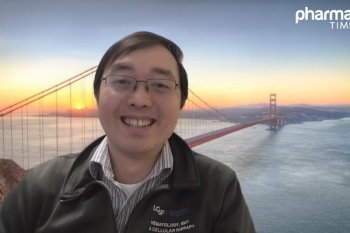
Streamlining GLP-1 Prior Authorizations: Innovations in Electronic Prior Authorization Technology
Electronic prior authorization (EPA) technology can streamline the complex process of obtaining prior authorizations for GLP-1 medications.
In an interview with Pharmacy Times®, Mike Cohn, vice president of network operations at CoverMyMeds, explored the challenges in the prior authorization process for glucagon-like peptide-1 (GLP-1) medications. He highlighted the administrative complexity and potential barriers to patient treatment and discussed how electronic prior authorization (EPA) solutions can simplify the workflow by integrating directly into electronic health records, reducing errors, and streamlining documentation. Cohn emphasized the importance of quick patient access to medications, proper titration, and understanding prior authorization renewal timelines. Cohn also shared exciting developments in automation and artificial intelligence (AI) technology, which have already demonstrated significant improvements, including an 83% reduction in prior authorization turnaround times and faster submission processes.
Pharmacy Times: What are the most frequent reasons GLP-1 prior authorizations are denied?
Mike Cohn: The prior auth process for GLP-1s can require a considerable amount of paperwork, including patient histories, specific diagnostic diagnosis codes to justify the medical necessity, etc. This repetitive process can lead to what we call administrative fatigue and errors for the care team, which again, potentially causes delay in patient treatment. The more that we can help streamline tasks for providers and their staff, the more efficient we can get the prior authorization through the process, ultimately submitting and approving to get that patient on therapy as quickly as possible. Just to give you some perspective, we've done a lot of research in this space, and what we found is care teams managing tasks are sometimes using upwards of 9 different digital applications to complete a prior authorization, which is crazy to us. If you are a provider or provider staff member and you have 9 different tools up on your screen to complete 1 prior authorization, it's complicated. What we've done is simplified it directly into the provider workflow, into their electronic health record, or their EHR, to help streamline that process.
Pharmacy Times: How do you ensure that documentation of lifestyle interventions (diet, exercise, behavioral support) is adequately captured and presented in a prior authorization submission?
Cohn: This is a crucial step, and while care teams are on the front lines submitting prior auths, EPA solutions can help to alleviate the workload. What EPA can do is help guide care teams through the correct forms, ensuring necessary fields are completed accurately, which reduces the likelihood of denials due to missing or incorrect information. We see a lot of times PA denials because simply a field was missing, and we can help guide providers to make sure they don't miss that field as they're submitting PAs. Also, when an EPA solution is integrated within the EHR, like I mentioned, information will automatically populate the necessary fields, which reduces manual entry and minimizes errors, of course. This automation simplifies the PA process, allowing prescribers to focus more on patient care, which we care about a lot, and less on administrative paperwork.
Pharmacy Times: What is the broader impact of successful GLP-1 prior authorization on patient outcomes, particularly for conditions like type 2 diabetes and obesity?
Cohn: Successful GLP-1 prior auths can help improve patient outcomes by removing access and affordability barriers to help ensure that patients can get on and stay on the therapies that they need to live a healthy life. EPA can streamline the process, helping to reduce delays and denials, which in turn, can lead to better management of conditions like type 2 diabetes and obesity. But really, it is about if a patient goes to a provider office, if it is deemed as a medical necessity that the patient needs a GLP-1, and they get written a prescription, and then a PA is needed. The last thing the patient wants to do is wait, and the last thing that the care teams want is for the patient to abandon the medication. So, when you mention patient outcomes, it's important to get the patient established on therapy quickly but also ensure that adherence is at the utmost and the care team has a good communication channel with the patient.
Pharmacy Times: How do you stay current with the latest clinical guidelines, new drug approvals, and changes in payer-specific prior authorization requirements for GLP-1s?
Cohn: It's an evolving landscape, as I'm sure you can imagine. I would think about this in 3 ways. First, collaboration is key. Aligning with a partner who understands the complete patient journey is essential. Collaboration across the health care industry, including working with EHR systems, pharmacies, providers, health plans, and PBMs, ensures a comprehensive approach and will help address some of the hurdles experienced by care teams when submitting prior authorizations. Next, interoperable solutions can help bridge the gaps between stakeholders. Utilizing interoperable solutions that can seamlessly integrate with a wide range of EHRs can help in accessing and sharing the latest clinical data and guidelines. Finally, network integration is paramount. So, working with a broad network of stakeholders allows for real-time updates, and extensive network connections can provide insights and support to navigate the complex requirements of PAs for GLP-1s. An example that I'll give you is there's an industry term we use called prospective prior authorizations, which means that the prior authorization is kicked off upstream in the provider office. There's also an industry term we use called retrospective prior authorizations, where the prescription gets to the pharmacy. No PA has been started yet, but when that pharmacy adjudicates the claim, it shows that a PA is needed, so a PA is started retrospectively in the pharmacy and shared back to the provider. When I mentioned network integration being paramount, that is what I mean. If tools are being used where the pharmacy is not integrated with the provider workflow, that PA goes into the ether. We're excited about CoverMyMeds that we have such an extensive network, and we have connected providers, EHRs, payers, and pharmacies into a singular workflow, so the PAs don't get lost throughout the process.
Pharmacy Times: While all GLP-1s share a class, there are differences between specific agents (eg, once daily vs once weekly, cardiovascular outcomes data). How do you leverage this knowledge to strengthen a prior authorization request for a particular GLP-1 when alternatives might be preferred by the payer?
Cohn: Good question. It's really a tailored approach for the patient's specific needs. We want to help ensure the patient remains at the center. That’s first and foremost. Generally, it would be important to highlight the unique benefits and clinical evidence that support the chosen medication for a patient in the prior auth at the discretion of the care team and prescribing physician, which is very important. For example, if the patient has a preference for a once-weekly dosing regimen, emphasize how this can improve adherence and convenience. Also, a tailored approach may help address the payer's concerns and increase the likelihood of approval. But as I previously shared, it's really dependent on the specific use case. I'd also say that we have seen [adverse] effects for GLP-1s, right? And so doing proper titration is very, very important. A lot of times, the patient might start on a medication, and the initial dose just might simply be too high, and they have negative [adverse] effects. Well, then you have to titrate down, and making sure the payer is informed of what the prescribing methodology is will be very important as you go a year down the road, as an example, to get that prior auth renewal that's inevitably going to happen. Which I'm not sure is talked about enough, so I'll touch on that just for a second. When a prior auth gets approved, there's typically a time frame for how long it's approved for. We've traditionally seen 1 year be the standard. With GLP-1s, that's different. Some plans are approved for 3 months, some for 6 months, some for 9 months, some for 1 year, and some for 2 years. If you're a patient or a care team, it's important you understand how long this prior authorization was approved for and when you will need to renew the prior authorization for the patient. And again, CoverMyMeds has tools that can help inform the care team of when a prior authorization renewal is needed.
Pharmacy Times: Is there anything you would like to add?
Cohn: I'd be remiss if we didn't talk about the evolution of automation and AI and what's next for EPA. This is something that we're really excited about at CoverMyMeds. We've been working alongside an industry partner to bring what we're calling scalable and responsible automation and AI to our EPA technology. The early results have been awesome. What we're seeing is improvements throughout the entire health care process, but most notably, we've seen an 83% reduction in prior authorization turnaround time. What that means is, in some instances, from days to hours and from hours to minutes, which we're very excited about, and submission times were 10 hours faster after receiving clinical question sets. A lot of times, what happens is, a PA can be submitted, but then additional information and clinical questions are needed from the health plan, and again, we're seeing submission times were 10 hours faster after the clinical question set because we are prepopulating forms. We're helping guide the provider and care team throughout the PA process, leveraging automation and AI directly in their provider EHR workflow, which, again, we're very excited about.
Newsletter
Stay informed on drug updates, treatment guidelines, and pharmacy practice trends—subscribe to Pharmacy Times for weekly clinical insights.




















































































































































































































